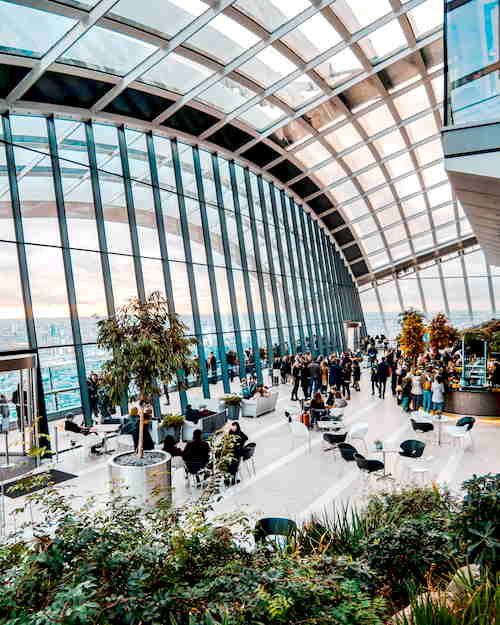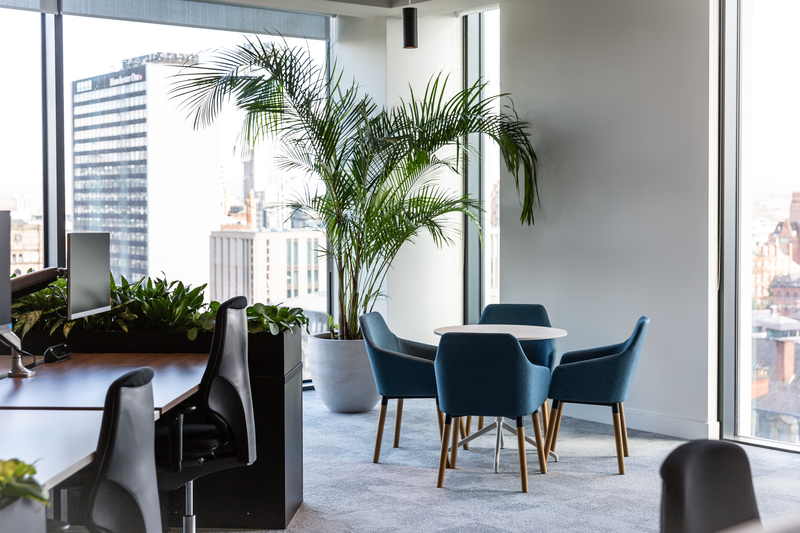Building certifications are increasingly being used to improve the sustainability of the construction industry and the built environment. BREEAM, LEED, WELL and SKA are examples.
For furniture, most providers charge an eye-watering premium to deliver a building certification compliant furniture package. However, the synergies between the circular economy and most sustainability certifications mean that furniture sourced from circular providers helps projects easily score points, while saving money.
This article provides a detailed view on how adopting a circular approach to office furniture can help gain credits under the building standards BREEAM, LEED, SKA and WELL.
Please contact us at contact@rypeoffice.com for further information or to discuss your project.
BREEAM
(Building Research Establishment Environment Assessment Methodology)
BREEAM is a family of assessment schemes designed to provide assessment and certification of individual buildings at various points of the building life cycle (i.e. at construction stage, in-use, and refurbishment) according to best practices in sustainability.
While BREEAM mostly focuses on construction and creating the interior space, furniture is considered in the following ways:
- MAT 1. Environmental impact of materials: 5 BREEAM points are available for items reused in situ. Furniture is included as one of the potential elements that can be reused.
- Wst 01. Construction waste management: encourages projects to promote resource efficiency. Projects gain credits for minimising the amount of waste generated per 100m2, which includes furniture.
- Sustainable Procurement: rewards projects, which procure more sustainable products and services per a sustainable procurement plan.
BREEAM In-Use (BIU) is designed for measuring, improving and certifying existing buildings (not refurbishments or new buildings). The 11 May 2020 release of BIU contains Rsc 03 Resources Inventory, which encourages organisations to make a detailed inventory of the resources within their building, and Rsc 06 Optimising Resource Use, Reuse and Recycling, which encourages occupants to re-use and recycle resources within the building.

LEED
(Leadership in Energy and Environmental Design)
LEED is an American green building certification scheme developed and administered by the US Green Building Council.
Relevant sections of LEED are:
- Interiors Lifecycle Impact Reduction
A point is available for ‘furniture reuse’, defined as furniture “sourced on-site or off-site, from such sources as existing client furniture inventories, furniture resellers, and reused furniture and material exchanges”. To qualify as reused, the furniture must be at least two years old.
The allocation of points is based on an estimated percentage spend on reused/remanufactured items. To qualify, reused furniture needs to be specified in furniture plans and construction documents. When the project is completed, the percentage of reused furniture should be recorded in the LEED tracking document. One point is achieved with over 30% of overall furniture spend being reused/remanufactured.
- Responsible Sourcing of Raw Materials
2 points are available for using five or more different responsible manufacturers for at least 40% of the value of products used in a building. This includes reused/remanufactured and recyclable products.
Products meeting the ‘Materials Reuse’ criterion are valued at 200% of their cost for the purpose of achieving credits (i.e. double the importance of most other criteria).
Furthermore, items sourced within 100 miles of the project site are valued at twice their base cost, which means that remanufactured furniture sourced from a client’s existing office or a nearby site is particularly helpful in scoring points.
- Interior Reuse
There are another 2 points available for ‘Interior Reuse’. This is separate from furniture and relates to “finished ceilings, flooring, interior wall partitions, doors for interior walls, exterior and party walls, and built-in case goods”. Two points are available if you reuse or salvage interior non-structural elements for at least 50% of the project area.
SKA
SKA helps landlords and tenants assess fit-out projects against a set of sustainability good practice criteria. SKA comprises more than a hundred good practice measures covering energy and CO2 emissions, waste, water, materials, pollution, wellbeing and transport.
For both SKA Higher Education and SKA Offices a fitout benchmark and assessment tool is provided, which provides criteria to be met for each of the following categories of furniture:
- Workstations and Tables
- Soft Seating (SKA HE)
- Storage Units
- Chairs: task seating (SKA HE)
- Chairs (SKA offices)
Each of the above categories state that if an item is reused, it is compliant.

WELL
The WELL Building Standard focuses on human health and well-being. The standard is administered by International Well Building Institute (IWBI).
WELL version two contains ten concepts deemed relevant to human health. Under each concept are a set of mandatory preconditions, which projects must fulfil, and optimisations, which project teams can pursue to gain additional points.
Furniture is particularly relevant to the concepts Movement and Materials.
- Movement
The movement concept is designed to promote physical activity and ergonomic comfort.
For Movement, WELL prefers sit-stand desks, which traditionally add significant financial and environmental cost (both in terms of embodied energy during the manufacturing process and energy used over the desk’s lifetime). WELL provides alternative strategies for meeting height adjustable desks requirements; more information is here.
Remanufactured sit-stand desks and desktop height adjustment stands (like Varidesks) significantly reduce the cost and sustainability burden.
- Materials
WELL’s Material’s Concept requires indoor air quality tests to achieve low levels of hazardous materials, like volatile organic compounds (VOCs).
In addition, the optimisation Manage Furniture and Furnishings Emissions awards points for a high percentage of furniture spend on products proven to be compliant according to prescribed testing regimes; applicants achieve 1 point for 50% spend on compliant products and 2 points for 90% furniture spent on compliant products.
Currently, if applicants wish to include remanufactured furniture as part of their percentage compliant spend, they need to draft an Alternative Adherence Path (a formal request for approval to use an alternative or innovative strategy).
However, in our correspondence with IWBI, they have stated that in the next version of WELL projects will be able to gain these points by simply reusing materials and furniture because volatile organic compounds (VOC) have already off-gassed.
Of course, where items are remanufactured, new materials added (fabric, glue, and the like) must not harm indoor air quality. At Rype Office we audit materials added to products during our remanufacturing process against the list of VOCs checked under the WELL indoor air quality assessments to ensure compliance.
- WELL Innovations
Projects are able to submit proposals for up to 10 innovations to IWBI for additional points. Innovative sustainable furniture designed and made by Rype Office are currently in the process of being submitted to IWBI for review.
More information
For more information on the cost savings, sustainability benefits and compliance of remanufactured furniture, furnishings and office electronics, drop us a line at contact@rypeoffice.com
Rype Office is the largest stand-alone office furniture remanufacturer in the UK and is waiting to help with your next project.

